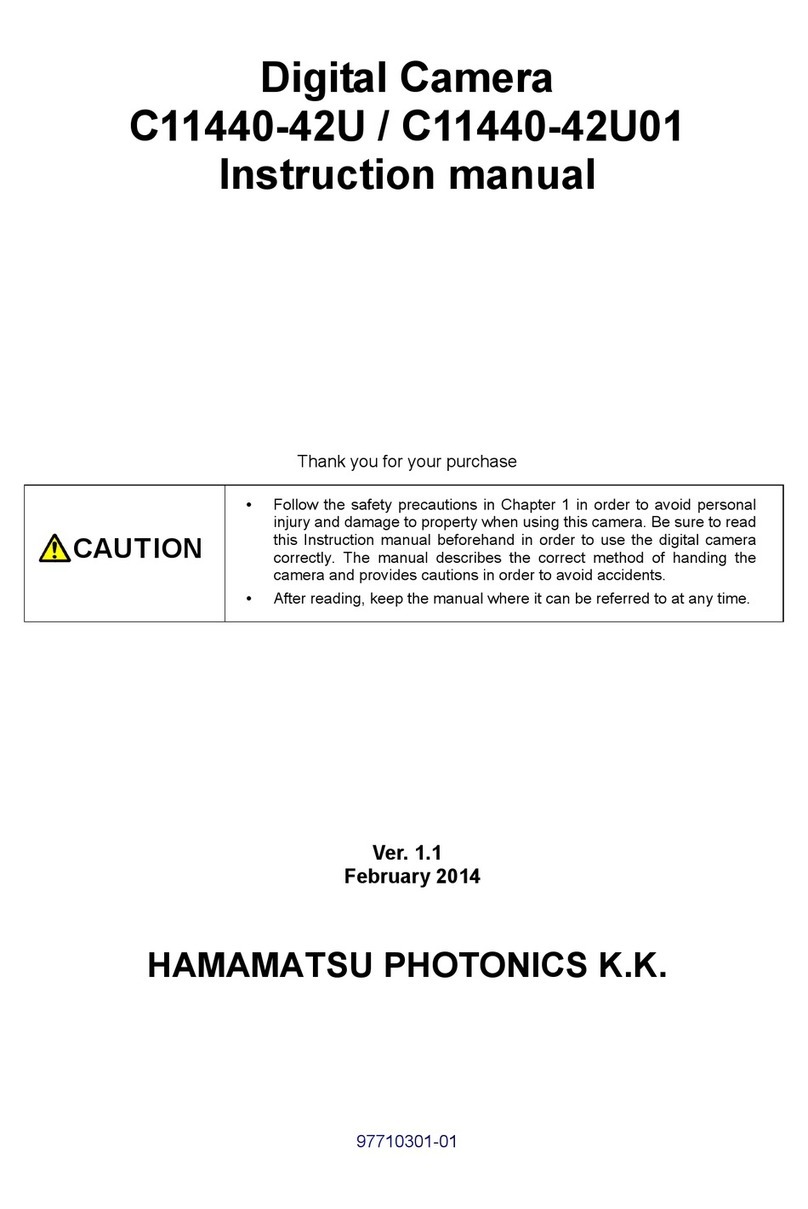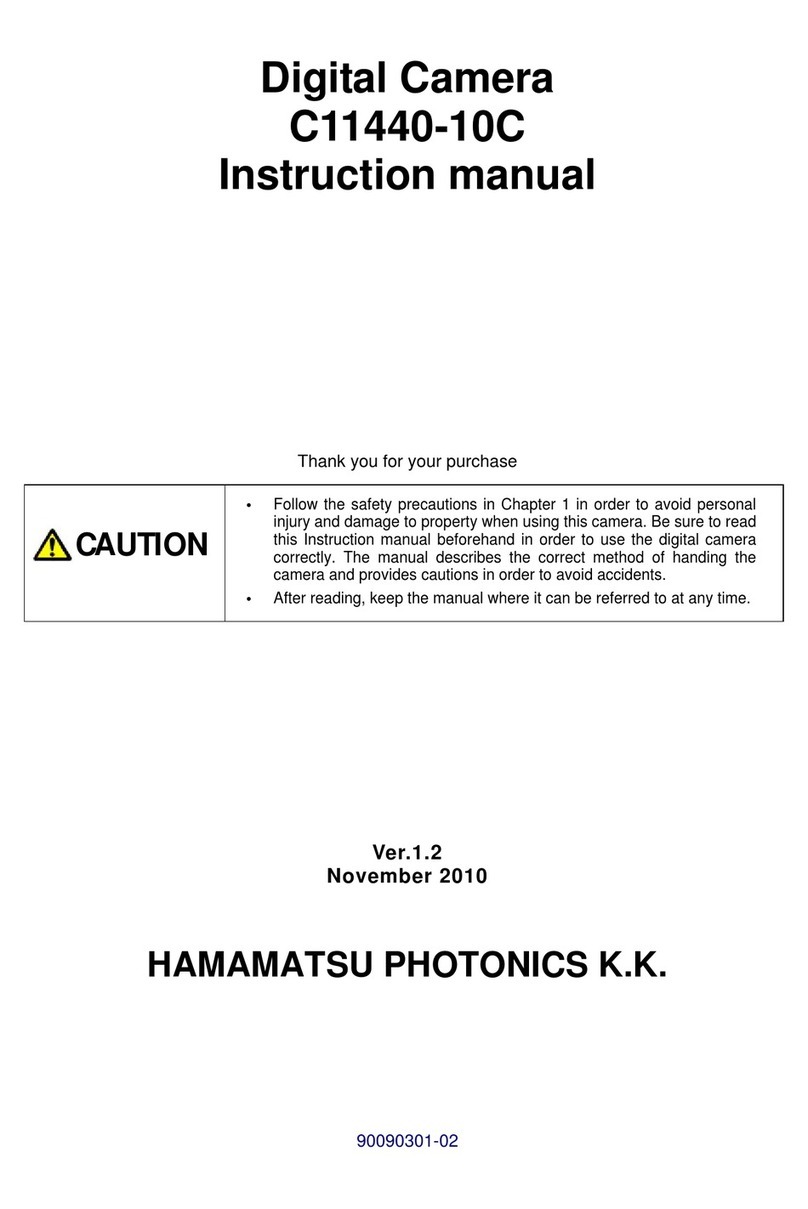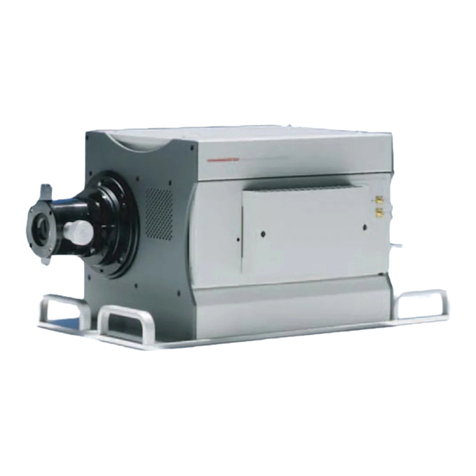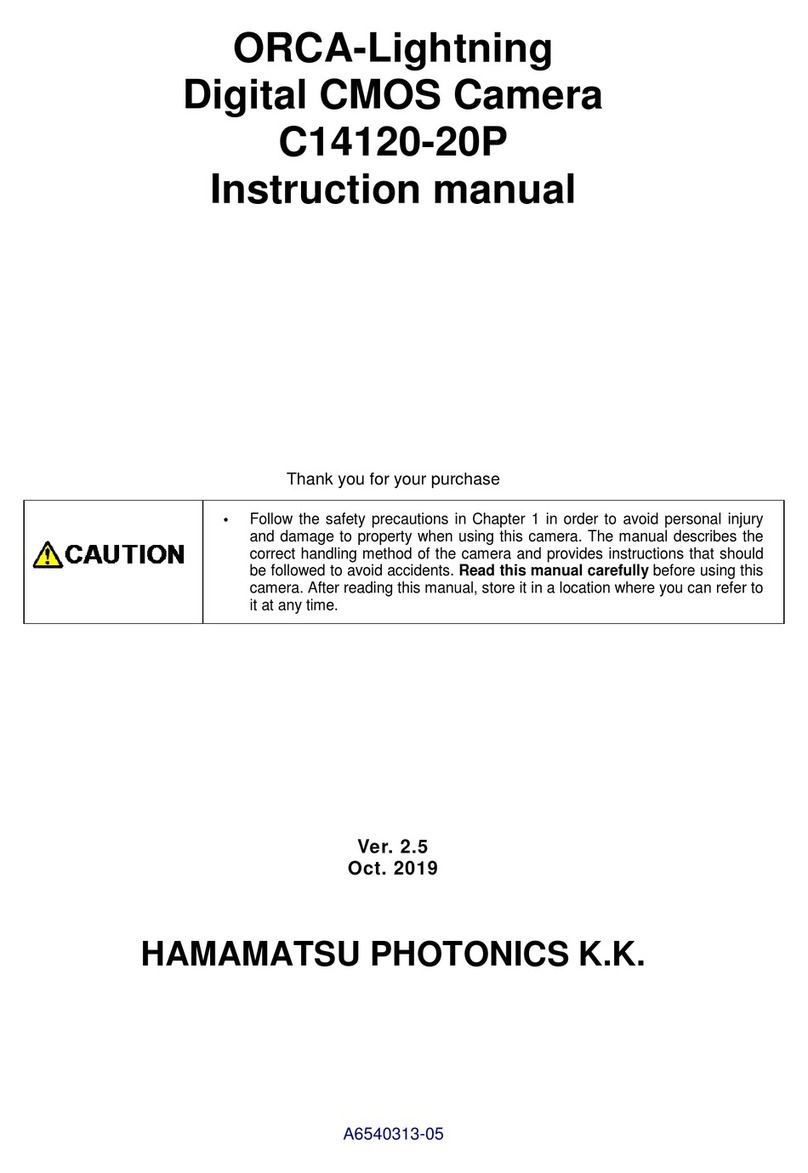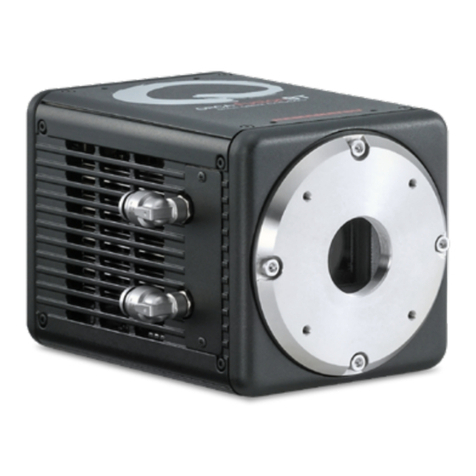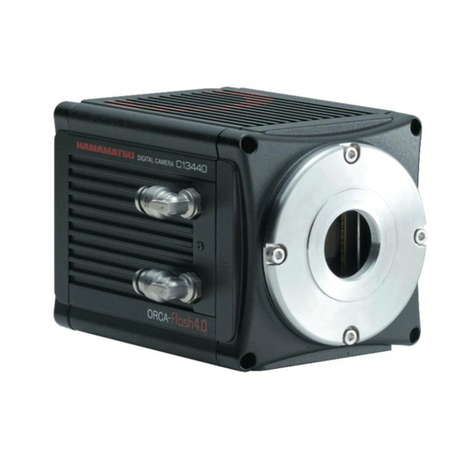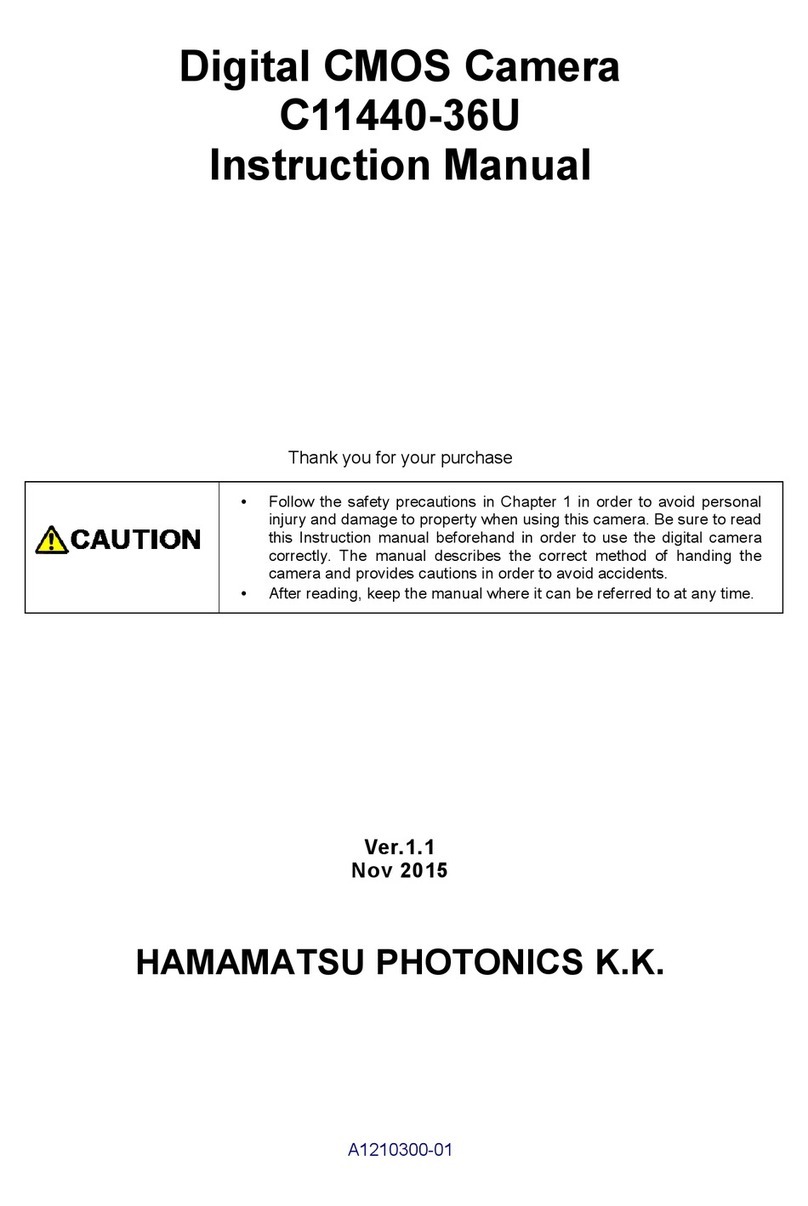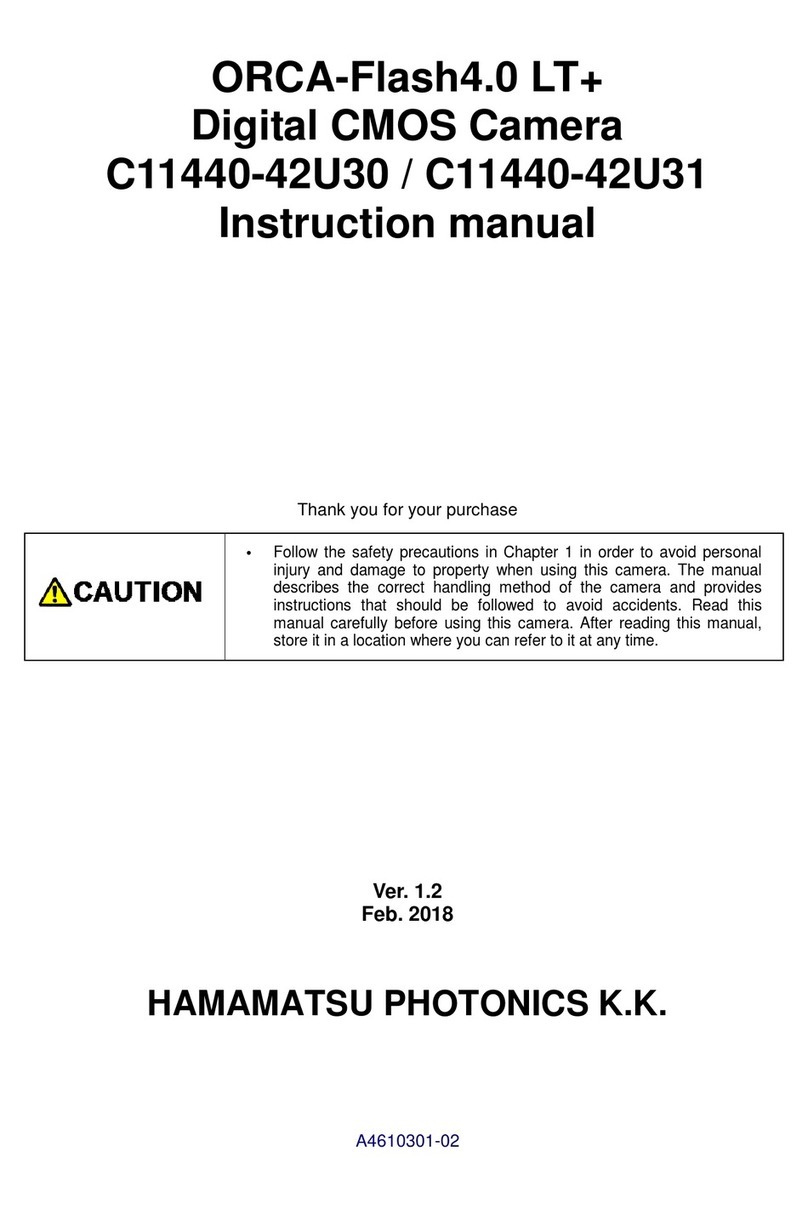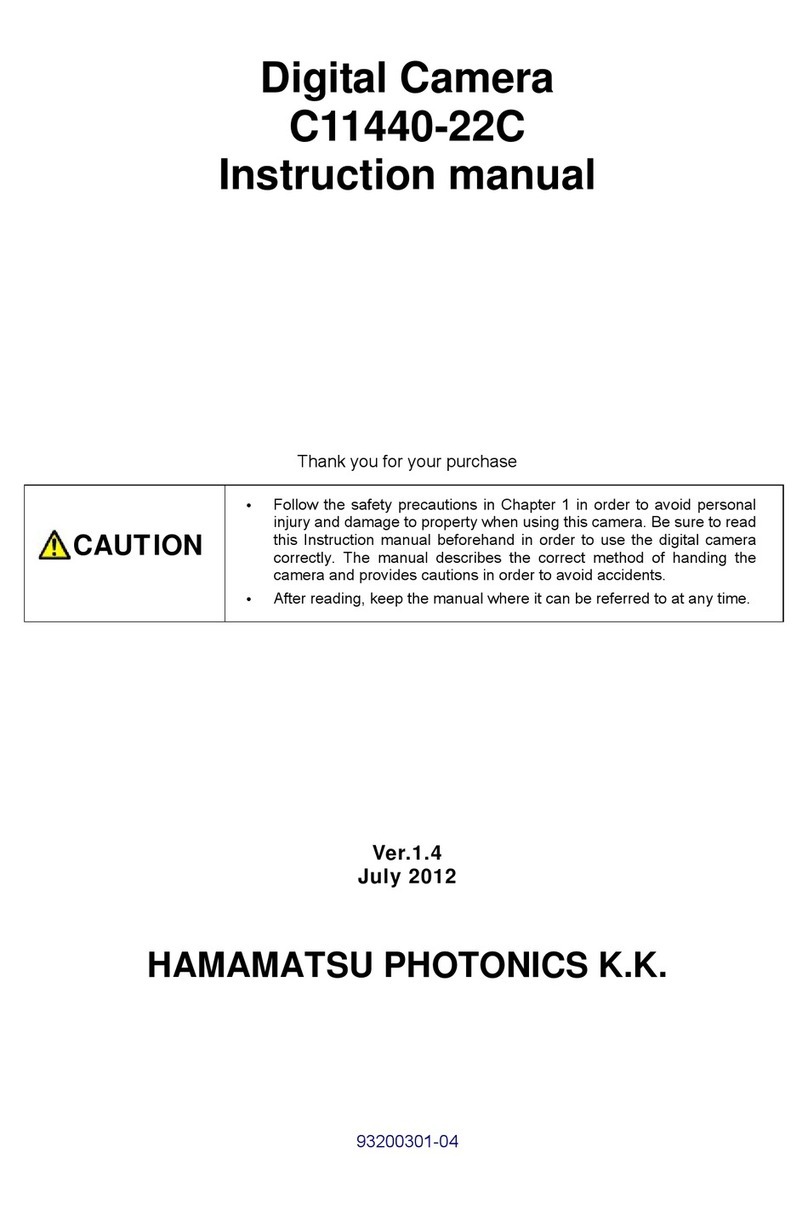
C9300-124 Ver.1.4
5
C
Co
on
nt
te
en
nt
ts
s
DIGITAL CCD CAMERA.................................................................................... 0
C9300-124.......................................................................................................... 0
INSTRUCTION MANUAL .................................................................................. 0
1. SAFETY PRECAUTIONS............................................................................ 1
1-1 CLASSIFICATION OF WARNING ......................................................................1
2. CHECK THE CONTENTS OF PACKAGE................................................... 4
3. INSTALLATION........................................................................................... 4
4. OVERVIEW.................................................................................................. 7
5. FEATURES.................................................................................................. 7
6. NAME AND FUNCTION OF THE PARTS................................................... 8
6-1 CAMERA.............................................................................................................8
7. CONNECTING CABLES........................................................................... 10
8. OPERATION.............................................................................................. 11
8-1 PRECAUTIONS.................................................................................................11
8-2 PREPARATION FOR IMAGING........................................................................11
8-3 IMAGING...........................................................................................................11
8-4 END OF IMAGING.............................................................................................11
9. IMAGE ACQUISITION............................................................................... 12
9-1 THEORY OF CCD.............................................................................................12
9-2 OVERVIEW OF CAMERA MODES...................................................................13
9-3 DETAIL OF CAMERA MODES.........................................................................14
9-3-1 DIGITAL OUTPUT BIT COUNT ............................................................................................ 14
9-3-2 CCD OUTPUT MODE .......................................................................................................... 14
9-3-3 DETAIL ON CCD SCANNING (SCAN MODE) ..................................................................... 14
9-3-4 EXPOSURE TIME SETTING ............................................................................................... 15
9-3-5 FAST REPETITION MODE .................................................................................................. 20
10. COMMAND SPECIFICATIONS................................................................. 23
10-1 TRANSMISSION INTERFACE..........................................................................23
10-2 COMMAND FORMAT .......................................................................................23
10-3 CAMERA RESPONSE TO COMMANDS..........................................................23
10-4 OVERVIEW OF COMMANDS...........................................................................25
10-5 COMMAND INITIAL SETTING..........................................................................27
10-6 DETAIL OF COMMANDS .................................................................................28
11. PRECAUTIONS WHEN USING THE CCD................................................ 33
12. MAINTENANCE ........................................................................................ 33
12-1 CARE.................................................................................................................33
13. TROUBLESHOOTING CHECKLIST......................................................... 34
13-1 IMAGE NOT TRANSFERRED ..........................................................................34
13-2 ALTHOUGH IMAGES ARE TRANSFERRED...................................................34
